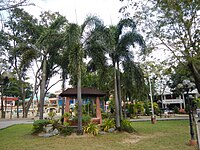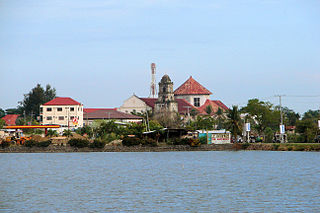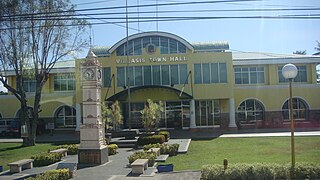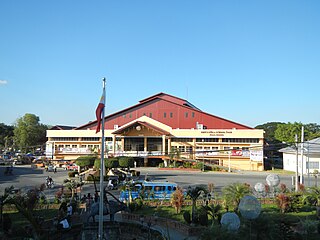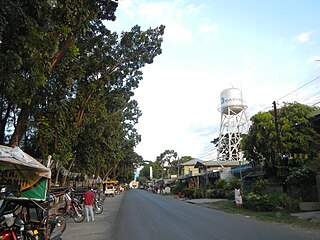Pozorrubio | |
|---|---|
| Municipality of Pozorrubio | |
 Plaza with Municipal Hall in background | |
 Map of Pangasinan with Pozorrubio highlighted | |
Location within the Philippines | |
| Coordinates: 16°07′N120°33′E / 16.12°N 120.55°E Coordinates: 16°07′N120°33′E / 16.12°N 120.55°E | |
| Country | Philippines |
| Region | Ilocos Region |
| Province | Pangasinan |
| District | 5th district |
| Founded | January 13, 1870 |
| Barangays | 34 (see Barangays) |
| Government | |
| • Type | Sangguniang Bayan |
| • Mayor | Emma Zosima T. Chan |
| • Vice Mayor | Ernesto Snooky B. Salcedo III |
| • Representative | Ramon V. Guico III |
| • Municipal Council | Members |
| • Electorate | 47,659 voters (2019) |
| Area | |
| • Total | 134.60 km2 (51.97 sq mi) |
| Elevation | 69 m (226 ft) |
| Highest elevation | 588 m (1,929 ft) |
| Lowest elevation | 24 m (79 ft) |
| Population | |
| • Total | 69,555 |
| • Density | 520/km2 (1,300/sq mi) |
| • Households | 15,789 |
| Economy | |
| • Income class | 1st municipal income class |
| • Poverty incidence | 10.16% (2015) [4] |
| • Revenue | ₱171,000,368.15 (2016) |
| Service provider | |
| • Electricity | Pangasinan 3 Electric Cooperative (PANELCO 3) |
| Time zone | UTC+8 (PST) |
| ZIP code | 2435 |
| PSGC | |
| IDD : area code | +63 (0)75 |
| Climate type | tropical monsoon climate |
| Native languages | Pangasinan Ilocano Tagalog |
| Website | www |
Pozorrubio, officially the Municipality of Pozorrubio (Pangasinan : Baley na Pozorrubio; Ilocano: Ili ti Pozorrubio; Tagalog : Bayan ng Pozorrubio), is a 1st class municipality in the province of Pangasinan, Philippines. According to the 2015 census, it has a population of 69,555 people. [3]
Contents
- Barangays
- Climate
- Demographics
- Economy
- History
- Local government
- Education
- Tourism
- St. Jude Thaddeus Parish Church
- Gallery
- References
- External links
Often the town's name is mistakenly written as Pozzorubio but the correct spelling is Pozorrubio. Its land area is 8,965 hectares. [5]
Pozorrubio is 199 kilometres (124 mi) from Manila and is 60 kilometres (37 mi) from the provincial capital, Lingayen.









